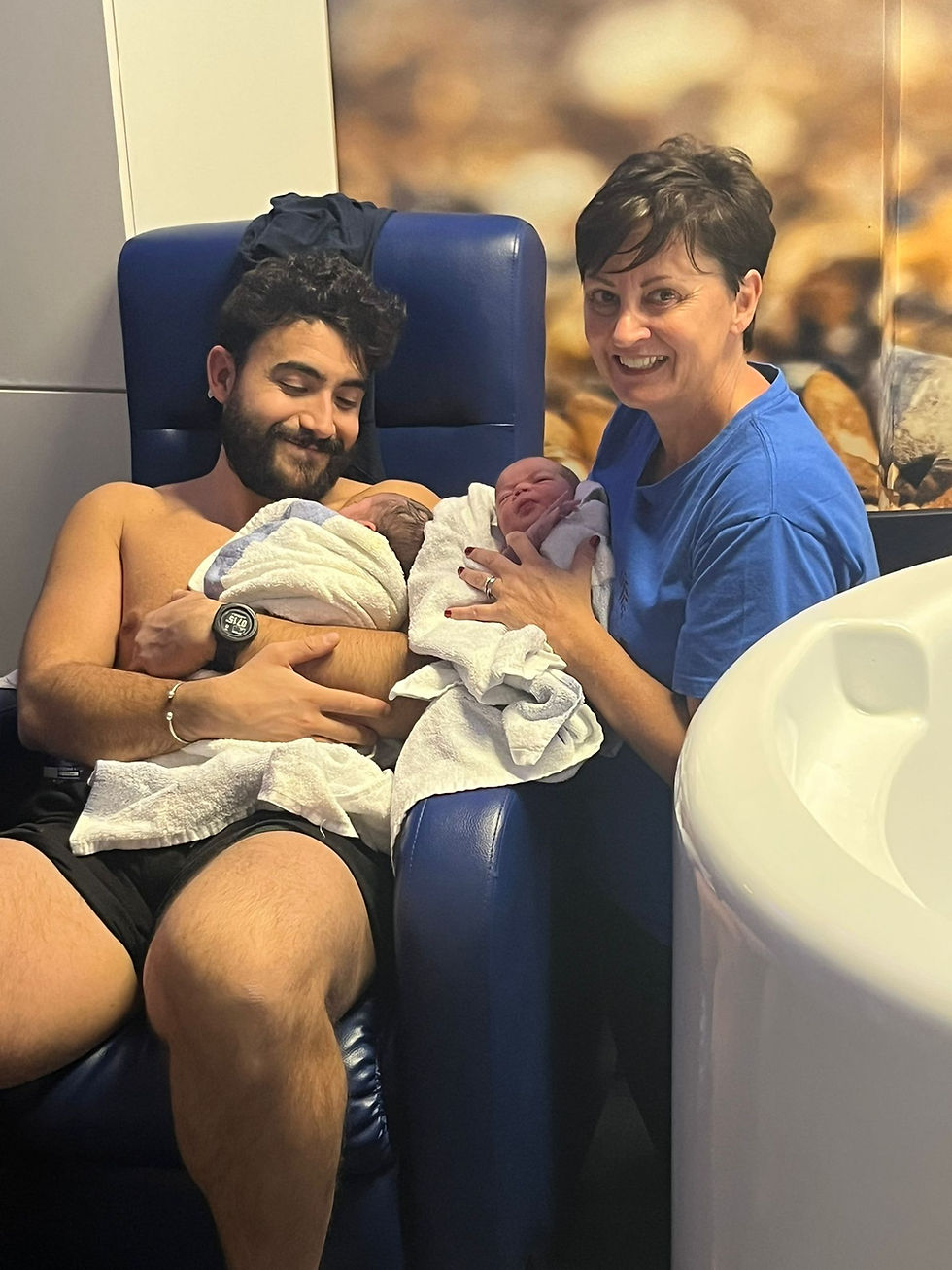Biomechanics for Birth. How your pelvis and baby work together.
- Doula Tracy

- Jan 3, 2022
- 3 min read
Updated: Mar 2, 2022

What is Biomechanics?
Biomechanics is a method of using techniques to support the pelvis and baby to work together for baby's birth.
Understanding the way the structures, (muscles and ligaments), of the pelvis work to aid baby through the birth canal and recognising when baby's position is inhibiting the flow of labour and responding to it, means labour can be shorter and more comfortable.
Baby's Position
For your baby to be born, they need to descend into the pelvis and to twist and turn to allow their head and body to fit.
Imagine for one moment that your baby is like a key. A key has to fit the lock, then turn, to open the door. Your baby needs to position itself in your pelvis, to be able to be born vaginally, with ease and minimal discomfort.
If your baby's neck and head are extended, chin up, back of head to their spine, the journey through the birth canal can be longer and more painful.
If baby positions itself in the lock in a good position, labour will progress more quickly.
A normal/physiological birth is more likely if baby's position is optimal. If not, techniques can be used to help baby to change their position.
What is the best position for baby to be in?
Ideally, the best position for baby to be in is the left occiput anterior. (LOA). Baby's head is down, slightly off centre, in the middle of the pelvis, with their back lying to the left side of your belly.
80% of baby's will rotate to a LOA position.
What can I do antenatally to help baby's position?
Baby needs to tuck its chin and move into an optimal position. To encourage this, from 20 weeks of pregnancy, you can practice daily the Forward Leaning Inversion. If baby is not in a LOA position at 32 weeks, then it is especially important to practice daily. You only stay in the FLI position for 3 breaths.
On YouTube there are several videos which demonstrate this technique. I like the Spinning Babies video.
Avoid slouching, uneven movements or exercise without stretching and balancing. Try and be upright, forward and open. UFO.
The pelvic inlet is wider from side to side. (Hip to hip.) It is shorter from back to back. (Tummy to back.) The sacrum needs to open to widen this area.
Deep squats can help baby to descend into the inlet of the pelvis. An all fours position with your knees wide also helps to open the pelvic inlet.
Lunges help the sacral area to open .
During labour, an all fours position with knees together and feet wide helps to open the pelvic outlet.
Yoga or Pilates are great practices. They can highlight any tight areas in your body which can be addressed.
Using a birthing ball to sit on and jiggle or sway can help.
Trained Birth Workers, like Doulas and teachers of Biomechanics, can demonstrate techniques to help.
I practice Biomechanics and also Rebozo techniques. (Look out for my Blog on Rebozo Techniques.)
Harmonics, which involves rhythm, rituals and fluid motion can help you to cope during labour. You remain relaxed whilst your birth partner jiggles or massages you to release tension and stimulation of the parasympathetic nervous system. This boosts oxytocin.
The Important Bit
Before you undertake any new practice, it is best to seek advise from a qualified practitioner.
A Doula or Birth Worker trained in Biomechanics can guide you through these techniques and others to help your labour to progress and your birth to be manageable.
This Blog only briefly covers the topic.
Please message me for more information.



Awesome, thanks. I'm 10 weeks today and will definitely start UFO-ing nearer to birth. I've just started Pilates too so glad to hear this is helpful